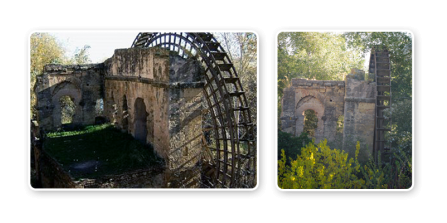
Albolafia (2 o 2) Audiodescription.

The Albolafia watermill is one of the ingenious hydraulic installations in this area and is located on the site of the old Kulaib dam. The watermill is located downstream from the bridge and records of its existence date back to before the islamic conquest of the city in the year 711.
It is known that these ingenious mills have been used since Roman times and records exist for their use in Cordoba since at least the eleventh century. However, the history of the original waterwheel is not clear. The most plausible hypothesis points to an Almoravid construction from 1136-1137. The structure was later reused in the Almohad period to supply the lower part of the Alcazaba with water.
The watermill was operational up until the end of the fifteenth century, when, according to tradition, Queen Isabella the Catholic ordered it to be taken down because the noise it produced prevented her from sleeping.
A watermill for flour production was later built here and was operational up until the early twentieth century. Several sources also claim that paper was produced in the so-called 'Kulaib watermill'. This has tremendous historic importance since prior to this, paper had only been produced in China. Cordoba would therefore have been the first place in Europe where paper production began.
Sections of this piece:
Press the Play buttons to access a speech version of the description or the audiodescription for visually impaired.
Click in Audiodescription to access to its text version.

Alcazar of the Christian Monarchs. Plaza Campo Santo de los Mártires s/n. 14004 Córdoba
2011 Ayto. de Córdoba. All rights reserved. Legal Advice


